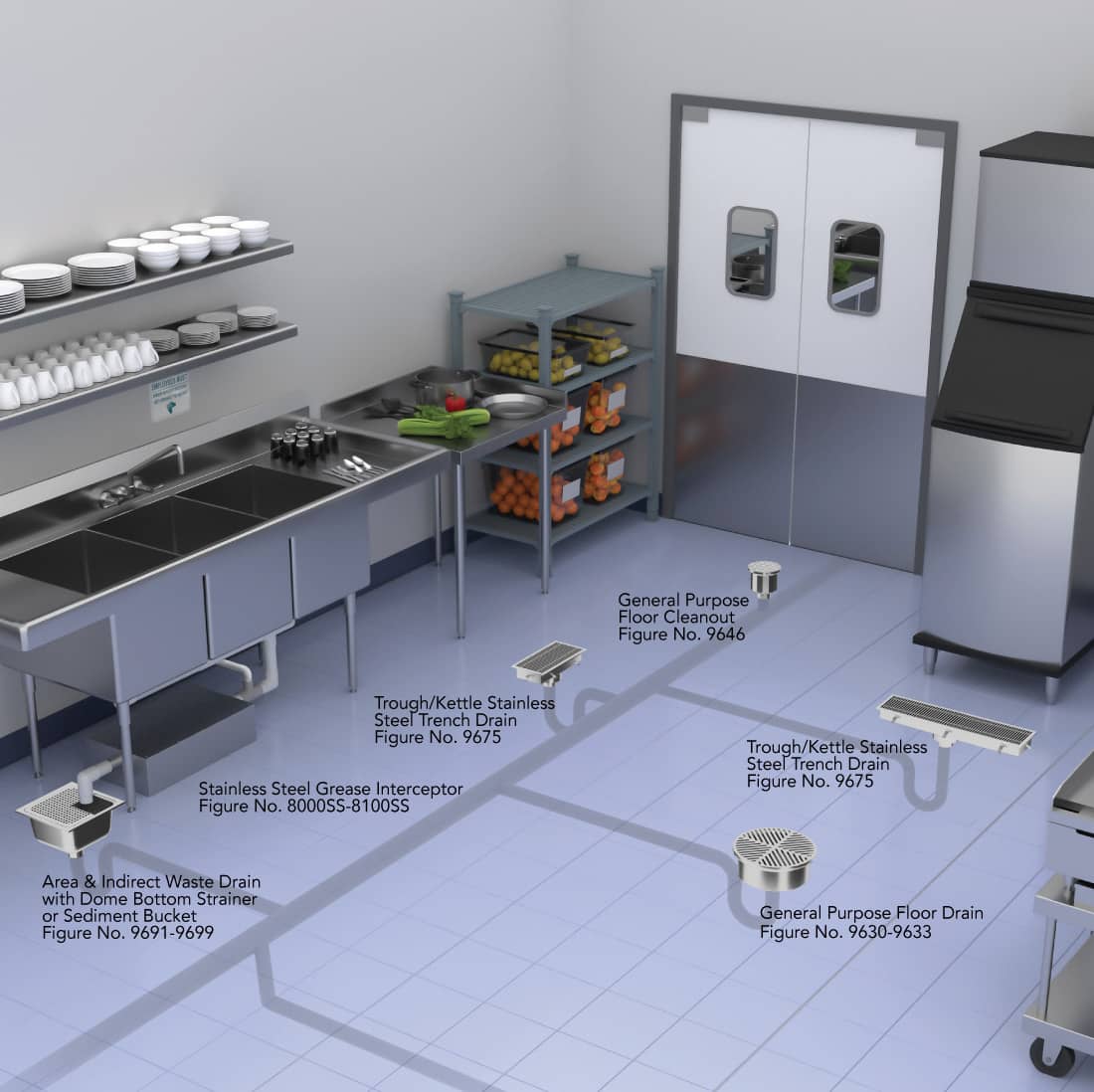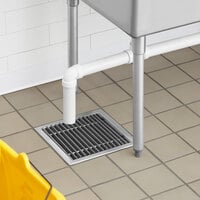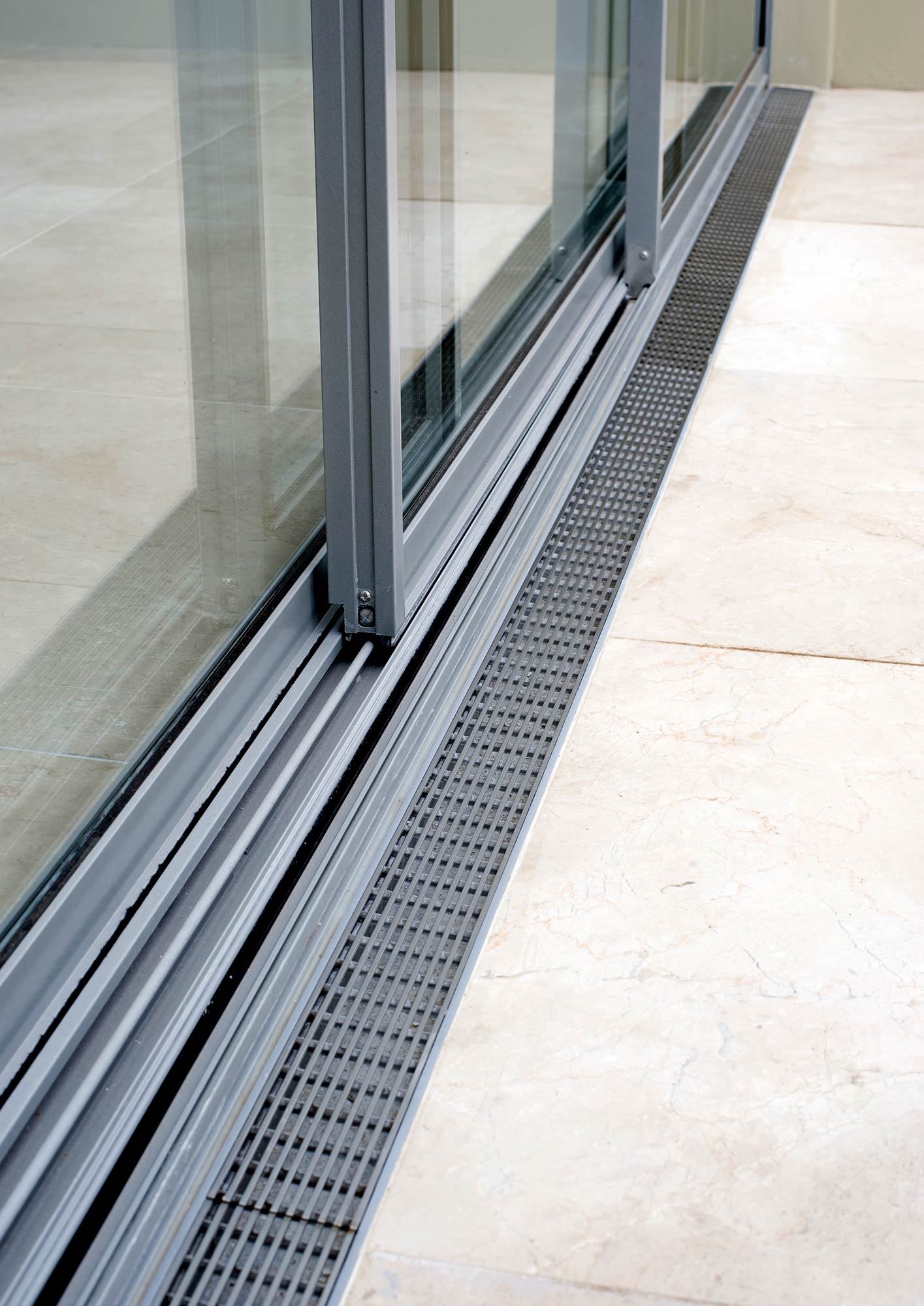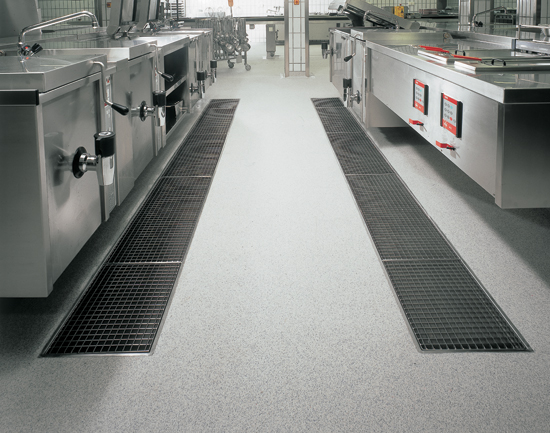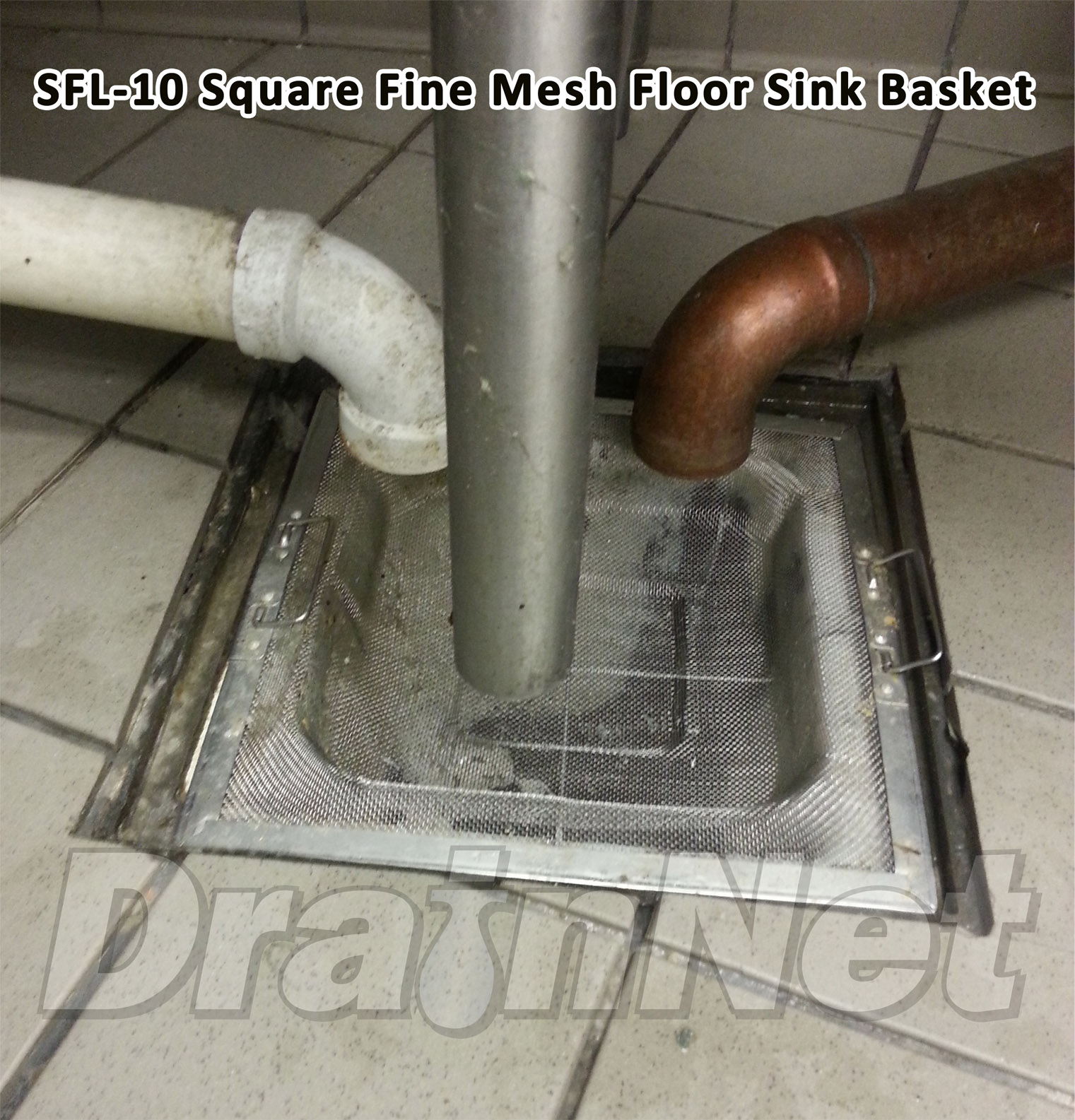Understanding Commercial Kitchen Regulations
Commercial kitchens are subject to various regulations and standards to ensure food safety, sanitation, and workplace safety. One critical aspect of these regulations pertains to the floor drainage systems. Understanding these regulations is essential for restaurant owners, kitchen managers, and anyone involved in the food service industry.
- Food Safety Compliance: Commercial kitchen regulations often mandate specific requirements for floor drainage to prevent cross-contamination and the buildup of bacteria. These regulations may include guidelines for the materials used in drains, slope requirements for efficient drainage, and the installation of proper traps to catch food particles and debris.
- Sanitation Standards: Proper drainage is crucial for maintaining cleanliness and sanitation in commercial kitchens. Regulations may specify the frequency of cleaning and maintenance tasks related to floor drains, as well as the use of approved cleaning agents to prevent the accumulation of grease, dirt, and other contaminants.
- Employee Safety: In addition to food safety and sanitation, regulations also address the safety of kitchen staff. Properly designed and maintained drainage systems help prevent slips, trips and falls in the kitchen, reducing the risk of injuries among employees.
- Environmental Compliance: Some regulations also aim to protect the environment by preventing the discharge of harmful substances into the sewer system. Commercial kitchen operators may be required to install grease traps or interceptors to capture fats, oils, and grease (FOG) before they enter the wastewater stream.
- Building Codes: Compliance with building codes is another aspect of commercial kitchen regulations. These codes often dictate the design, construction, and maintenance of floor drainage systems to ensure they meet structural and safety standards.
- Penalties for Non-Compliance: Failure to comply with commercial kitchen regulations can result in fines, penalties, and even closure of the establishment. Therefore, businesses need to stay informed about the relevant regulations and ensure their kitchen facilities meet the requirements.

Importance of Proper Drainage Systems
Proper drainage systems are essential components of any commercial kitchen. They play a critical role in maintaining cleanliness, preventing safety hazards, and ensuring regulatory compliance. Understanding the importance of these systems is key to running a successful and sanitary food service operation.
Preventing Contamination: Proper drainage helps prevent the accumulation of food waste, grease, and other contaminants on the kitchen floor. Without adequate drainage, these substances can create breeding grounds for bacteria, leading to foodborne illnesses and health code violations.
Reducing Slip and Fall Risks: Standing water or wet surfaces in the kitchen pose significant slip and fall hazards for employees. Proper drainage systems remove excess water efficiently, minimizing the risk of accidents and injuries.
Preserving Kitchen Equipment: Excess moisture and water accumulation can damage kitchen equipment, such as stoves, refrigerators, and countertops. By maintaining proper drainage, businesses can extend the lifespan of their equipment and reduce repair and replacement costs.
Enhancing Efficiency: Efficient drainage systems help keep the kitchen clean and organized, allowing staff to work more efficiently. Without the need to navigate around puddles or debris, employees can focus on food preparation and customer service.
Meeting Regulatory Requirements: Many health and safety regulations mandate the installation and maintenance of proper drainage systems in commercial kitchens. Compliance with these requirements is not only necessary for legal reasons but also for protecting the health and well-being of customers and employees.
Improving Overall Hygiene: A clean and dry kitchen environment is essential for maintaining proper hygiene standards. Proper drainage systems facilitate the removal of waste and spills, reducing the risk of cross-contamination and ensuring that food is prepared in a safe and sanitary manner.
Key Considerations for Commercial Kitchen Floor Drains
Choosing the right floor drains for a commercial kitchen involves considering various factors, including functionality, durability, and compliance with regulatory requirements. Here are some key considerations to keep in mind when selecting floor drains for your establishment.
Material: Floor drains are typically made from materials such as stainless steel, PVC, or cast iron. Stainless steel drains are durable, corrosion-resistant, and easy to clean, making them a popular choice for commercial kitchens. PVC drains are lightweight and cost-effective but may not be as durable as stainless steel. Cast iron drains offer excellent durability but may be prone to rust if not properly maintained.
Size and Capacity: The size and capacity of the floor drains should be appropriate for the volume of water and waste expected in the kitchen. Larger drains with higher flow rates are suitable for busy kitchens with heavy foot traffic and extensive food preparation activities.
Design and Configuration: Floor drains come in various designs, including square, round, and linear trench drains. The design and configuration should complement the layout of the kitchen and ensure efficient water drainage without creating obstructions or safety hazards.
Grate Type: The type of grate used in the floor drain is crucial for preventing debris and food particles from clogging the drain. Grates with smaller openings or mesh screens are effective at catching solids while allowing water to flow freely. Removable grates facilitate cleaning and maintenance tasks.
Slope and Installation: Proper installation and slope are essential for ensuring that water drains effectively towards the floor drains. The floor should be sloped towards the drains to prevent standing water and minimize the risk of slip-and-fall accidents.
Compliance with Regulations: It is important to select floor drains that comply with relevant regulations and standards for commercial kitchens. This includes requirements for materials, dimensions, and installation practices to ensure proper sanitation, hygiene, and safety.
Types of Floor Drains for Commercial Kitchens
Floor drains are essential components of commercial kitchen infrastructure, facilitating the efficient removal of wastewater and preventing the buildup of moisture and contaminants. Several types of floor drains are available, each with its unique features and advantages. Understanding the different options can help kitchen operators make informed decisions when selecting drainage solutions for their establishments.
Traditional Floor Drains: Traditional floor drains consist of a drain body installed flush with the floor surface, usually with a removable grate or cover. These drains are versatile and suitable for various kitchen applications, including sinks, dishwashing areas, and food preparation zones. They are available in different sizes and materials to accommodate different flow rates and environmental conditions.
Trench Drains: Trench drains, also known as linear drains or channel drains, are long, narrow drains installed flush with the floor and designed to collect water over a large surface area. They are commonly used in areas where large volumes of water need to be drained quickly, such as around cooking equipment or in food processing facilities. Trench drains can handle high flow rates and are often equipped with removable grates for easy cleaning.
Point Drains: Point drains, also known as spot drains or single-point drains, are small, round drains installed at specific locations in the kitchen floor. They are ideal for draining isolated areas, such as under sinks or in corners where water tends to collect. Point drains are available in various sizes and configurations to accommodate different drainage needs.
Grease Interceptors: Grease interceptors, also known as grease traps or grease separators, are specialized drainage devices designed to capture fats, oils, and grease (FOG) from wastewater before it enters the sewer system. These interceptors help prevent grease buildup in plumbing lines and reduce the risk of blockages and backups. Grease interceptors are typically required in commercial kitchens to comply with environmental regulations and prevent pollution.
Floor Sink Drains: Floor sink drains are deep, basin-like fixtures installed flush with the floor surface to collect wastewater from floor drains or other sources. They are commonly used in conjunction with floor drains to provide additional drainage capacity and prevent standing water. Floor sink drains are available in various sizes and configurations to accommodate different plumbing systems and drainage requirements.
Specialized Drains: In addition to standard floor drains, there are specialized drains available for specific applications in commercial kitchens. For example, floor drains with built-in sediment traps or debris baskets are designed to capture solid particles and prevent clogs. Anti-slip drains feature textured grates or coatings to enhance traction and reduce the risk of accidents in wet environments.
Installation and Maintenance Best Practices
Proper installation and maintenance of floor drains are essential for ensuring their effectiveness, longevity, and compliance with regulatory requirements. Following best practices in installation and maintenance can help maximize the performance and lifespan of commercial kitchen drainage systems.
Professional Installation: Floor drains should be installed by qualified professionals with experience in commercial plumbing and drainage systems. Proper installation ensures that drains are positioned correctly, with the appropriate slope and alignment to facilitate efficient water drainage.
Slope and Alignment: Floor surfaces should be sloped towards the drains to ensure that water flows freely and does not pool or accumulate in low-lying areas. The slope should be consistent and uniform, with no dips or depressions that could impede drainage. Drains should be aligned with the surrounding floor surface to prevent tripping hazards and facilitate cleaning.
Sealing and Waterproofing: Proper sealing and waterproofing are essential for preventing leaks and water damage around floor drains. Sealants and waterproofing membranes should be applied carefully to ensure a tight seal between the drain body and the surrounding floor substrate, as well as around any penetration points or joints.
Regular Inspection and Cleaning: Floor drains should be inspected regularly for signs of clogs, blockages, or damage. Any debris or sediment should be removed promptly to prevent obstructions and maintain proper drainage. Cleaning should be performed using appropriate tools and cleaning agents to avoid damage to drain components.
Grease Trap Maintenance: If grease interceptors are installed in the kitchen, they should be inspected and cleaned according to manufacturer recommendations. This typically involves removing accumulated grease and solids from the interceptor and disposing of them properly to prevent clogs and odors.
Preventative Maintenance Programs: Implementing a preventative maintenance program can help ensure that floor drains are maintained regularly and following industry best practices. This may include scheduling routine inspections, cleaning, and maintenance tasks, as well as keeping detailed records of maintenance activities for regulatory compliance purposes.
Addressing Common Challenges and Solutions
Despite the importance of proper drainage systems in commercial kitchens, operators may encounter various challenges that affect the performance and efficiency of their floor drains. Identifying these challenges and implementing appropriate solutions is crucial for maintaining optimal kitchen hygiene and compliance with regulatory requirements.
Clogging and Blockages: One of the most common challenges with floor drains is clogging and blockages caused by food waste, grease, and other debris. Regular cleaning and maintenance are essential for preventing clogs, but if blockages occur, they may need to be cleared using drain snakes, augers, or hydro-jetting equipment.
Foul Odors: Accumulated grease, food particles, and stagnant water can create foul odors in and around floor drains. To address this issue, drains should be cleaned regularly using enzymatic cleaners or bacterial treatments that break down organic matter and neutralize odors.
Leaks and Water Damage: Improper installation or damaged drain components can result in leaks and water damage around floor drains. Sealant and waterproofing materials may need to be reapplied or repaired to prevent leaks, and damaged drain components should be replaced promptly to restore proper function.
Slippery Surfaces: Wet floors around floor drains can pose slip and fall hazards for kitchen staff. Installing anti-slip mats or coatings around drains can help improve traction and reduce the risk of accidents. Regular cleaning and maintenance of floors are also essential for preventing slippery conditions.
Inadequate Drainage Capacity: In some cases, floor drains may not have sufficient capacity to handle the volume of water generated in the kitchen, leading to standing water and drainage problems. Upgrading to larger or more efficient drains, or installing additional drains in high-traffic areas, can help alleviate this issue.
Regulatory Non-Compliance: Failure to meet regulatory requirements for floor drainage can result in fines, penalties, and other consequences for commercial kitchen operators. Regular inspections, maintenance, and documentation of drainage systems are essential for ensuring compliance with relevant regulations and standards.
Matt Square Commercial Kitchen Floor Drain, Model Name/Number: Com
Commercial Kitchen Floor Drain 210 x 2502mm – Central Drain – Horizontal Outlet DN50 PVC – Honeycomb
Custom stainless steel slot channel for a commercial kitchen with
CE Center – Choosing Stainless Steel Drains for Caustic Environments
Stainless Steel Drain Strainer, fine mesh, w/ flange for 8.5″ square Floor Sink
Related Posts:
- Small Kitchen Floor Ideas
- Floating Kitchen Floor Tiles
- Commercial Restaurant Kitchen Flooring
- Dark Hardwood Kitchen Floors
- Farmhouse Kitchen Flooring Ideas
- Spanish Style Kitchen Floor Tiles
- Vinyl Kitchen Flooring Ideas
- The Best Vinyl Flooring For Kitchen
- Painted Kitchen Floor Ideas
- How To Clean A Greasy Kitchen Floor


